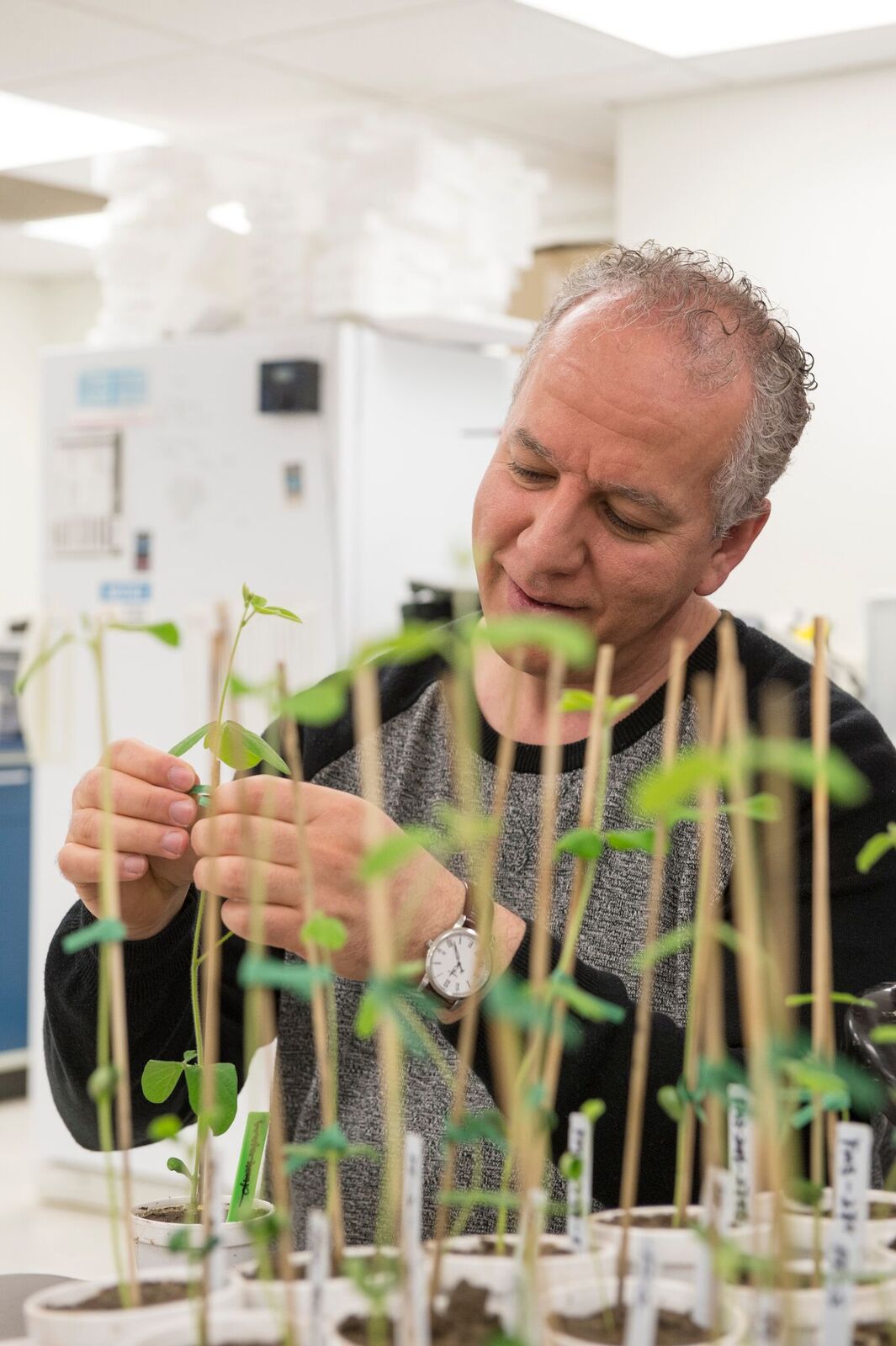
March 27, 2017
Discovery opens ‘new field of research’ into SCN resistance
CARBONDALE, Ill. – Disease resistance is in the genes’ haplotypes.
Five years ago, a team of scientists led by Southern Illinois University Carbondale’s Khalid Meksem discovered which gene was key to soybean cyst nematode (SCN) resistance in soybeans. Now they are learning which genes work as partners to combat the pest.
Soybeans are a major element in the Midwest economy. In Illinois, for example, soybeans alone are worth nearly $6 billion a year in direct sales, not counting money and employment in soybean processing and other post-harvest jobs. The soybean cyst nematode, a microscopic roundworm that feeds on soybean roots, can be a big problem for more than just the farmer.
“This year alone, the soybean cyst nematode cost the soybean industry $1.2 billion in damage,” Meksem, professor of plant genetics and genomics, said. “Nematicides are harmful to the environment and expensive for the farmer to control the disease. The best way to manage the disease is to use the soybean’s disease resistant genes and plant resistant soybean lines in infected soils.”
Meksem and his team made soybean history in 2012 when they discovered which gene – GmSHMT08 -- was crucial to SCN resistance. Now, in 2017, he, and scientists from SIU and the University of Missouri Columbia, are finding out more about how a major partner gene called GmSNAP resists the SCN. They had already learned that the gene codes an SCN-resistant protein. Now they are finding out more about how that happens, and how the two partners work together for optimum SCN resistance.
The most common SCN-resistant type soybeans grown in the United States derive their resistance either from a soybean line called PI 88788 or Peking. Meksem’s team found that resistance in the Peking-type soybean requires the two different genes (GmSNAP and GMSHMT) with a specific allele combination to trigger SCN resistance. An allele is an alternative form of a gene, one member of a pair, located in a specific position on a specific chromosome. Based on this different allele requirement, and differences in amino acids in resistant soybeans and susceptible soybeans, the researchers conclude that the Peking-type GmSNAP18 gene is performing a different role in SCN resistance than the PI 88788-type GmSNAP 18 gene.
“This opens up a whole new field of research,” Meksem said. “We should not be looking at one gene and one mechanism of that gene. We need to find more about their allele partners to understand how they sense the presence of the SCN, how do they recognize the threat, what is the trigger?
“To our best knowledge, this is the first report of a gene that evolved to possibly use two mechanisms to ensure the same function within the same species – in this case, resistance to a pathogen,” Meksem said. “The knowledge from this study can be readily used to improve nematode resistance in soybeans.”
Meanwhile, the nematode isn’t idly waiting in the field, picking only on plants with less disease-resistance. It is evolving and adapting and changing its own gene sequences to find ways to attack even those plants with strong gene-resistance. Consequently, even a consistently SCN-resistant variety of soybean can lose its resistance over time. That’s one reason it is important to understand how SCN disease-resistant genes function.
There is some urgency for this research, Meksem said. The possibility of the soybean cyst nematode building complete resistance to the PI 88788 line could be catastrophic. The answer, Meksem said, is genetic diversity in the soybean – using other disease-resistant genes and develop more sources of SCN resistant soybean lines -- which, to be successful, requires a better understanding of disease-resistant genes. Meksem’s research is a step in that direction.
In the meantime, he suggests adding a new element to current SCN management. Farmers already rotate crops to manage the SCN. In Illinois, that often means soybean rotating with corn, and sometimes with winter wheat as well. Meksem said adding another element to the crop rotation -- rotating the type of soybean resistant lines used – would make it harder for the SCN to develop immunity to the disease-resistance type deployed in the field, or at least will slow this process.
The paper detailing the work and results of the research teams, “The GmSNAP18 is the Peking-type rhg1-a Gene for Resistance to Soybean Cyst Nematode,” appears online in “Nature” today (March 27). “Nature Communications” is widely considered the top scientific journal, especially as far as its impact on the international scientific community and on the public as well. Publication in “Nature Communication” is a career highlight for any scientist, Meksem said, noting that it is often a once-in-a-lifetime occurrence. This paper, though, is his second in the “Nature” journal family.
